-
 Bitcoin
Bitcoin $106,754.6083
1.33% -
 Ethereum
Ethereum $2,625.8249
3.80% -
 Tether USDt
Tether USDt $1.0001
-0.03% -
 XRP
XRP $2.1891
1.67% -
 BNB
BNB $654.5220
0.66% -
 Solana
Solana $156.9428
7.28% -
 USDC
USDC $0.9998
0.00% -
 Dogecoin
Dogecoin $0.1780
1.14% -
 TRON
TRON $0.2706
-0.16% -
 Cardano
Cardano $0.6470
2.77% -
 Hyperliquid
Hyperliquid $44.6467
10.24% -
 Sui
Sui $3.1128
3.86% -
 Bitcoin Cash
Bitcoin Cash $455.7646
3.00% -
 Chainlink
Chainlink $13.6858
4.08% -
 UNUS SED LEO
UNUS SED LEO $9.2682
0.21% -
 Avalanche
Avalanche $19.7433
3.79% -
 Stellar
Stellar $0.2616
1.64% -
 Toncoin
Toncoin $3.0222
2.19% -
 Shiba Inu
Shiba Inu $0.0...01220
1.49% -
 Hedera
Hedera $0.1580
2.75% -
 Litecoin
Litecoin $87.4964
2.29% -
 Polkadot
Polkadot $3.8958
3.05% -
 Ethena USDe
Ethena USDe $1.0000
-0.04% -
 Monero
Monero $317.2263
0.26% -
 Bitget Token
Bitget Token $4.5985
1.68% -
 Dai
Dai $0.9999
0.00% -
 Pepe
Pepe $0.0...01140
2.44% -
 Uniswap
Uniswap $7.6065
5.29% -
 Pi
Pi $0.6042
-2.00% -
 Aave
Aave $289.6343
6.02%
How to catch the OBV energy tide divergence? How to analyze the volume-price coordination?
OBV energy tide divergence signals potential market shifts; traders should monitor OBV line vs. price to capitalize on upcoming movements.
Jun 08, 2025 at 11:56 pm
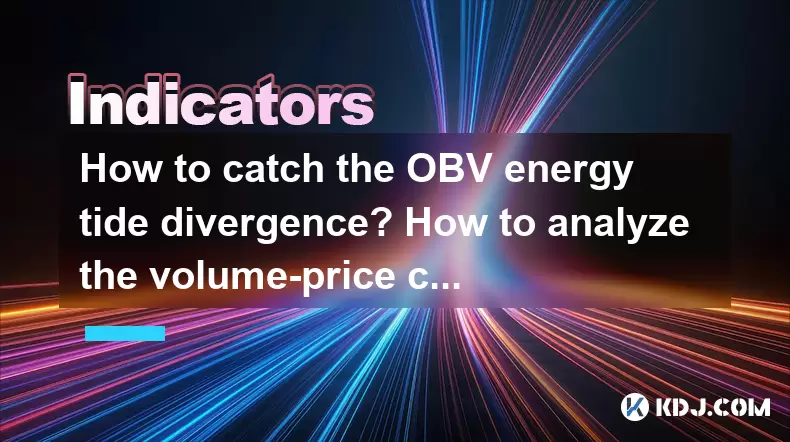
Understanding the OBV Energy Tide Divergence
The On-Balance Volume (OBV) indicator is a crucial tool in the cryptocurrency trading world, used to measure buying and selling pressure by tracking the volume flow. The OBV energy tide divergence refers to the discrepancy between the OBV line and the price movement of a cryptocurrency, signaling potential shifts in market trends. This divergence can be a powerful indicator for traders looking to capitalize on upcoming price movements.
To effectively catch the OBV energy tide divergence, traders need to closely monitor the relationship between the OBV line and the price chart. When the OBV line starts to move in a different direction than the price, it indicates that the volume is not supporting the current price trend. For instance, if the price of a cryptocurrency is rising but the OBV line is falling, it suggests that the upward price movement may not be sustainable due to a lack of volume support. Conversely, if the price is falling but the OBV line is rising, it may signal that the downward trend is losing momentum, and a reversal could be imminent.
Analyzing Volume-Price Coordination
Volume-price coordination is the analysis of how trading volume interacts with price movements. In the context of cryptocurrency trading, this coordination can provide insights into the strength and sustainability of a trend. High volume accompanying a price increase suggests strong buying interest and a potentially sustainable uptrend. Conversely, if the price is increasing with low volume, it may indicate a weak trend that could reverse quickly.
To analyze volume-price coordination effectively, traders should look for patterns where volume spikes coincide with significant price movements. For example, a breakout from a resistance level with high volume is more likely to be sustained than one with low volume. Similarly, a price drop on high volume suggests strong selling pressure and a potentially deeper decline.
Identifying OBV Divergence Patterns
Identifying OBV divergence patterns involves looking for specific scenarios where the OBV line and the price chart diverge. There are two main types of OBV divergence: bullish divergence and bearish divergence.
- Bullish Divergence: This occurs when the price of a cryptocurrency is making new lows, but the OBV line is making higher lows. This suggests that selling pressure is decreasing, and a potential reversal to the upside may be on the horizon.
- Bearish Divergence: This occurs when the price is making new highs, but the OBV line is making lower highs. This indicates that buying pressure is waning, and a potential reversal to the downside could be imminent.
To identify these patterns, traders should:
- Use a charting platform that supports OBV and price overlays.
- Regularly monitor the OBV line in relation to price movements.
- Look for instances where the OBV line starts to move in the opposite direction of the price.
- Confirm the divergence with other technical indicators, such as the Relative Strength Index (RSI) or Moving Average Convergence Divergence (MACD).
Practical Steps to Trade OBV Divergence
Trading based on OBV divergence requires a systematic approach to ensure that traders can capitalize on the identified patterns. Here are the practical steps to follow:
- Monitor the Charts: Regularly check the price and OBV charts for any signs of divergence. Use a reliable charting platform that allows for easy visualization of both the price and OBV lines.
- Confirm the Divergence: Once a potential divergence is spotted, confirm it by looking at other technical indicators. For example, if you see a bullish divergence, check if the RSI is also showing signs of a potential reversal.
- Set Entry Points: Determine entry points based on the confirmed divergence. For a bullish divergence, consider entering a long position when the price breaks above a recent high. For a bearish divergence, consider entering a short position when the price breaks below a recent low.
- Set Stop-Losses: Always set stop-loss orders to manage risk. For a long position, place the stop-loss below the recent low. For a short position, place the stop-loss above the recent high.
- Monitor the Trade: Keep an eye on the trade and adjust stop-losses as necessary to lock in profits or minimize losses.
Using Volume-Price Coordination for Entry and Exit Points
Volume-price coordination can be used to refine entry and exit points in trades. Here are some strategies:
- Entry Points: Look for high-volume breakouts as potential entry points. For example, if a cryptocurrency breaks above a resistance level with high volume, it may be a good time to enter a long position. Conversely, if it breaks below a support level with high volume, consider entering a short position.
- Exit Points: Use volume spikes to determine exit points. If you are in a long position and see a significant volume spike with a price drop, it may be a signal to exit the trade to lock in profits. Similarly, if you are in a short position and see a significant volume spike with a price increase, consider exiting to minimize losses.
Case Studies of OBV Divergence and Volume-Price Coordination
To better understand how to apply OBV divergence and volume-price coordination, let's look at some case studies from the cryptocurrency market.
- Case Study 1: Bullish Divergence in Bitcoin: In early 2023, Bitcoin experienced a period of price decline, reaching new lows. However, the OBV line during this period showed higher lows, indicating a bullish divergence. Traders who spotted this divergence and entered long positions when the price broke above a recent high could have capitalized on the subsequent price rally.
- Case Study 2: Bearish Divergence in Ethereum: In mid-2022, Ethereum was making new highs, but the OBV line was showing lower highs, indicating a bearish divergence. Traders who identified this divergence and entered short positions when the price broke below a recent low could have profited from the subsequent price drop.
- Case Study 3: Volume-Price Coordination in Litecoin: In late 2021, Litecoin broke above a key resistance level with high volume, signaling strong buying interest. Traders who entered long positions at this breakout point and exited when a subsequent volume spike accompanied a price drop could have maximized their profits.
Frequently Asked Questions
How can I use OBV divergence to confirm other technical indicators?
OBV divergence can be used to confirm signals from other technical indicators by looking for instances where multiple indicators point to the same potential trend reversal. For example, if the OBV shows a bullish divergence and the RSI is also moving out of oversold territory, it strengthens the case for a potential upward price movement.
What are the common pitfalls to avoid when trading based on OBV divergence?
Common pitfalls include entering trades too early before the divergence is confirmed, ignoring other market factors such as news and events, and not setting proper stop-losses. Traders should always wait for confirmation from multiple indicators and consider the broader market context.
How can I improve my volume-price coordination analysis?
To improve volume-price coordination analysis, traders should use multiple timeframes to confirm trends, incorporate volume indicators such as the Volume Weighted Average Price (VWAP), and regularly backtest their strategies to refine their approach.
Can OBV divergence be used for all cryptocurrencies, or are there specific ones where it works better?
OBV divergence can be used for all cryptocurrencies, but it tends to be more effective for those with higher liquidity and trading volume, such as Bitcoin and Ethereum. For less liquid cryptocurrencies, the OBV may be more susceptible to manipulation and less reliable.
Disclaimer:info@kdj.com
The information provided is not trading advice. kdj.com does not assume any responsibility for any investments made based on the information provided in this article. Cryptocurrencies are highly volatile and it is highly recommended that you invest with caution after thorough research!
If you believe that the content used on this website infringes your copyright, please contact us immediately (info@kdj.com) and we will delete it promptly.
- 2025-W Uncirculated American Gold Eagle and Dr. Vera Rubin Quarter Mark New Products
- 2025-06-13 06:25:13
- Ruvi AI (RVU) Leverages Blockchain and Artificial Intelligence to Disrupt Marketing, Entertainment, and Finance
- 2025-06-13 07:05:12
- H100 Group AB Raises 101 Million SEK (Approximately $10.6 Million) to Bolster Bitcoin Reserves
- 2025-06-13 06:25:13
- Galaxy Digital CEO Mike Novogratz Says Bitcoin Will Replace Gold and Go to $1,000,000
- 2025-06-13 06:45:13
- Trust Wallet Token (TWT) Price Drops 5.7% as RWA Integration Plans Ignite Excitement
- 2025-06-13 06:45:13
- Ethereum (ETH) Is in the Second Phase of a Three-Stage Market Cycle
- 2025-06-13 07:25:13
Related knowledge
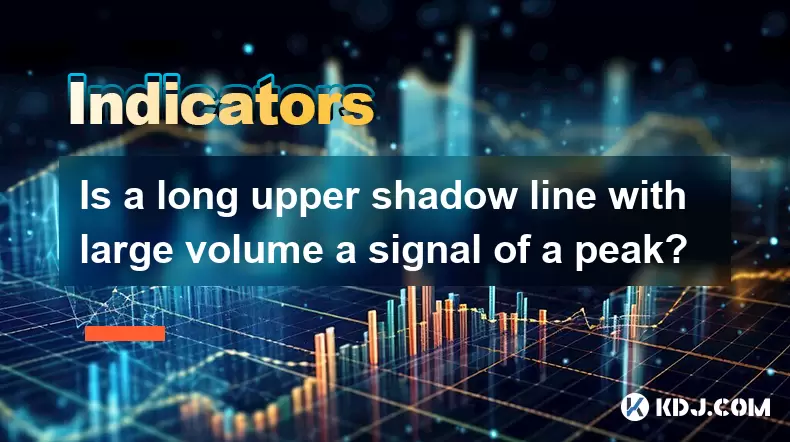
Is a long upper shadow line with large volume a signal of a peak?
Jun 17,2025 at 05:07am
Understanding the Long Upper Shadow LineA long upper shadow line, often referred to as a shooting star or inverted hammer depending on its location in a chart, is a candlestick pattern that indicates potential reversal from an uptrend. This pattern forms when prices rise significantly during the trading period but then fall back to close near the openin...

How to confirm the effectiveness of the average price line support in the time-sharing chart?
Jun 17,2025 at 12:56am
Understanding the Time-Sharing Chart and Its RelevanceIn cryptocurrency trading, time-sharing charts play a crucial role in analyzing short-term price movements. These charts typically display price fluctuations over a specific period, often ranging from minutes to hours. Traders rely on them to make quick decisions based on real-time data. The average ...

What does it mean when the momentum indicator breaks above the zero axis?
Jun 17,2025 at 12:43am
Understanding the Momentum IndicatorThe momentum indicator is a technical analysis tool used to measure the speed or velocity of price movements in cryptocurrency markets. It helps traders identify potential trend reversals, overbought or oversold conditions, and confirms existing trends. The indicator typically oscillates around a zero line, with value...
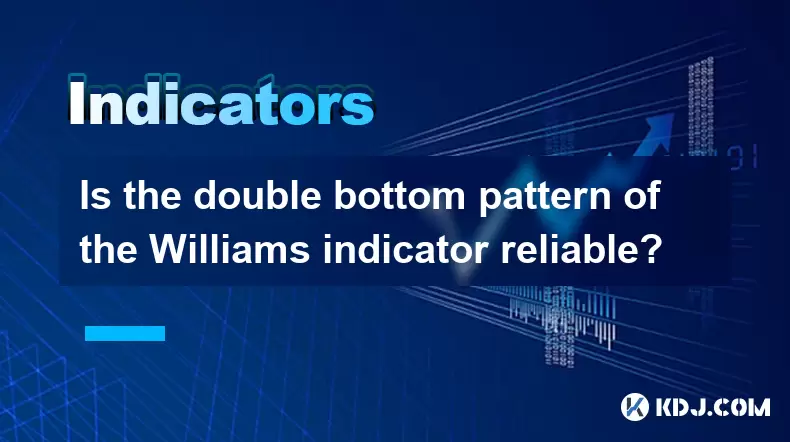
Is the double bottom pattern of the Williams indicator reliable?
Jun 17,2025 at 03:56am
Understanding the Williams Indicator and Its SignificanceThe Williams %R indicator, often referred to as Williams Percent Range, is a momentum oscillator used in technical analysis to identify overbought or oversold conditions in the market. Developed by Larry Williams, this indicator fluctuates between 0 and -100, with readings above -20 indicating ove...
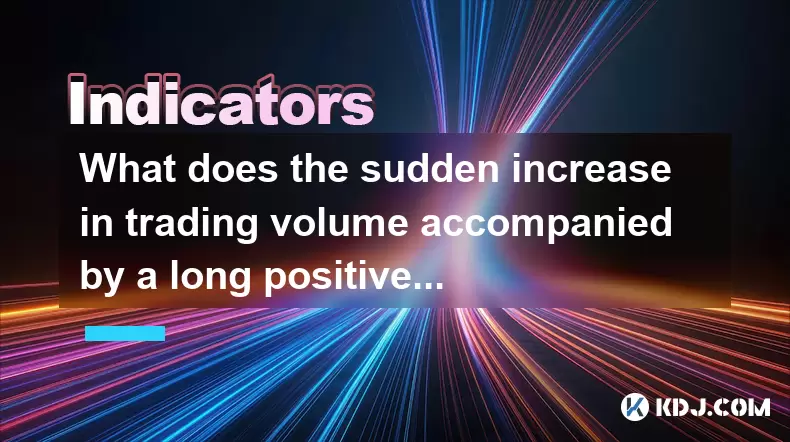
What does the sudden increase in trading volume accompanied by a long positive line mean?
Jun 17,2025 at 06:01am
Understanding the Sudden Surge in Trading VolumeWhen traders observe a sudden increase in trading volume, it typically signals a significant shift in market sentiment. This surge often indicates that more participants are entering or exiting positions, which could be due to news events, macroeconomic data releases, or institutional activity. High tradin...
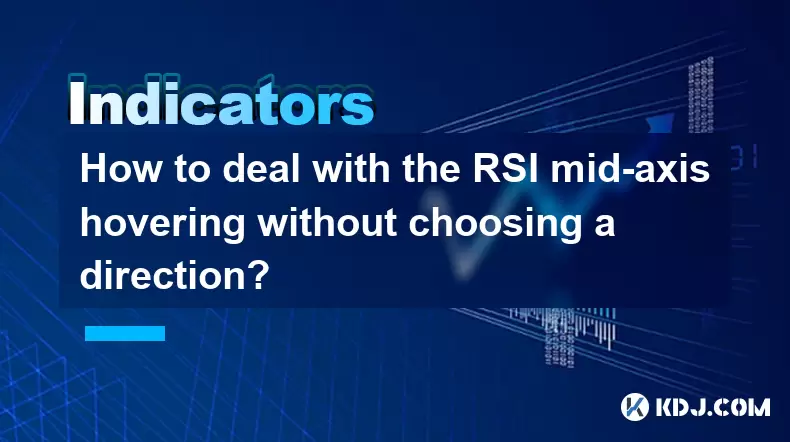
How to deal with the RSI mid-axis hovering without choosing a direction?
Jun 17,2025 at 02:02am
Understanding RSI Mid-Axis Hovering in Cryptocurrency TradingThe Relative Strength Index (RSI) is a popular momentum oscillator used by traders to assess whether an asset is overbought or oversold. In cryptocurrency markets, it's common for the RSI to hover around its mid-axis, typically at the 50 level, without showing a clear upward or downward trend....

Is a long upper shadow line with large volume a signal of a peak?
Jun 17,2025 at 05:07am
Understanding the Long Upper Shadow LineA long upper shadow line, often referred to as a shooting star or inverted hammer depending on its location in a chart, is a candlestick pattern that indicates potential reversal from an uptrend. This pattern forms when prices rise significantly during the trading period but then fall back to close near the openin...

How to confirm the effectiveness of the average price line support in the time-sharing chart?
Jun 17,2025 at 12:56am
Understanding the Time-Sharing Chart and Its RelevanceIn cryptocurrency trading, time-sharing charts play a crucial role in analyzing short-term price movements. These charts typically display price fluctuations over a specific period, often ranging from minutes to hours. Traders rely on them to make quick decisions based on real-time data. The average ...

What does it mean when the momentum indicator breaks above the zero axis?
Jun 17,2025 at 12:43am
Understanding the Momentum IndicatorThe momentum indicator is a technical analysis tool used to measure the speed or velocity of price movements in cryptocurrency markets. It helps traders identify potential trend reversals, overbought or oversold conditions, and confirms existing trends. The indicator typically oscillates around a zero line, with value...

Is the double bottom pattern of the Williams indicator reliable?
Jun 17,2025 at 03:56am
Understanding the Williams Indicator and Its SignificanceThe Williams %R indicator, often referred to as Williams Percent Range, is a momentum oscillator used in technical analysis to identify overbought or oversold conditions in the market. Developed by Larry Williams, this indicator fluctuates between 0 and -100, with readings above -20 indicating ove...

What does the sudden increase in trading volume accompanied by a long positive line mean?
Jun 17,2025 at 06:01am
Understanding the Sudden Surge in Trading VolumeWhen traders observe a sudden increase in trading volume, it typically signals a significant shift in market sentiment. This surge often indicates that more participants are entering or exiting positions, which could be due to news events, macroeconomic data releases, or institutional activity. High tradin...

How to deal with the RSI mid-axis hovering without choosing a direction?
Jun 17,2025 at 02:02am
Understanding RSI Mid-Axis Hovering in Cryptocurrency TradingThe Relative Strength Index (RSI) is a popular momentum oscillator used by traders to assess whether an asset is overbought or oversold. In cryptocurrency markets, it's common for the RSI to hover around its mid-axis, typically at the 50 level, without showing a clear upward or downward trend....
See all articles

























































































